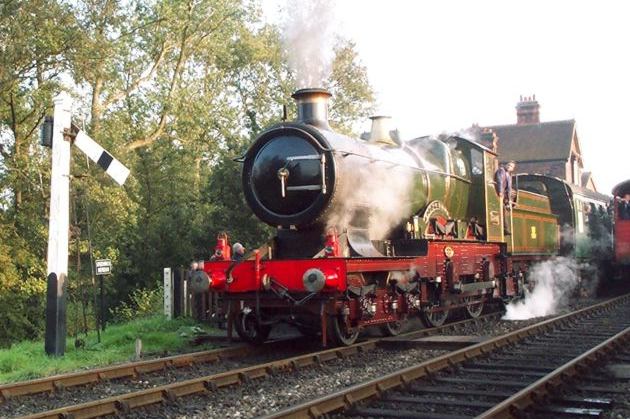Drawings of GWR Locomotives
0-6-0 Pannier Tanks
See this article for more details of the pannier tank classes
The family resemblance over the years is clear, as is the sometimes
striking differences in appearance caused by different types of
boiler in the 1076 Class. The variations in the 19th Century classes
create a positive minefield for modellers: a locomotive could go into
the works for a heavy overhaul and come out looking as if it were of
a different class. Its also interesting to note the differences
between Wolverhampton and Swindon built locomotives.
I believe
the traditional practice of assigning the designer of each class to
be the current CME is particularly nominal in the case of these tank
engines. There was clearly a steady process of development from the
original Armstrong designs, and the work would be done by various
junior draughtsman under the direction of the drawing office
management.
Some CMEs, Churchward particularly, had a regular
and deep participation in the design work, but one suspects that
Collett, for instance, whose greatest skills were in production
engineering, might have adopted a more hands off approach. Reading K
J Cook's Swindon steam, one can imagine an instruction like
"We're in for a big batch of new tank engines. Combine the best
from the 1854 and 2721 classes and get in all the new features so
they run the maximum mileage between overhauls."
The
drawings are in roughly chronological order.
If you can look at
these drawings and gain a greater understanding of how these pannier
tank designs evolved over the years then I will have achieved my aims
with these sketches, but if you use them for anything beyond the
simplest "plastic bashing" representational modelling then I have
done you a disfavour by creating them.
The drawings are arranged
so they can be opened in individual tabs of a tabbed browser and
flicked between to look at the changes. Whilst they are to a
consistent scale, I deliberately haven't shown the scale because of
the various caveats noted above.
| 1813 | 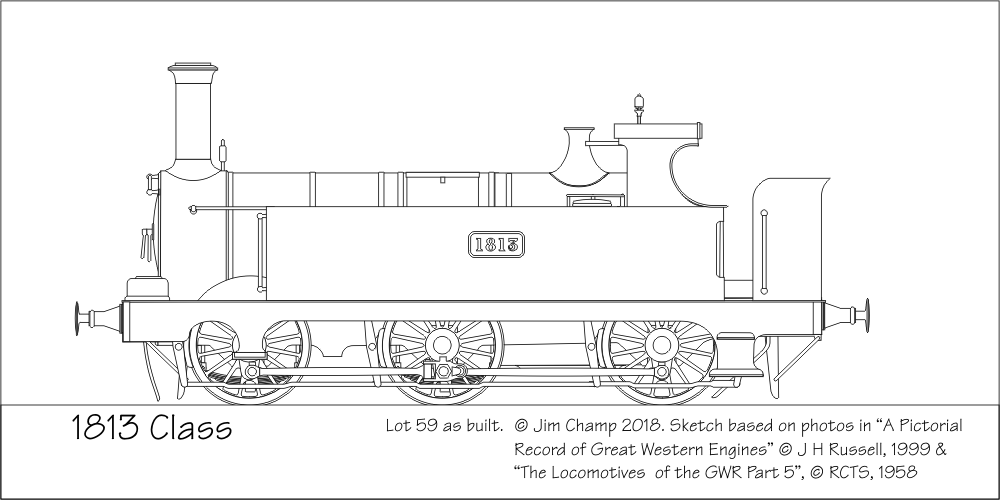
|
Lot 59. 1882. | Armstrong | 0-6-0T |
| 1076 | 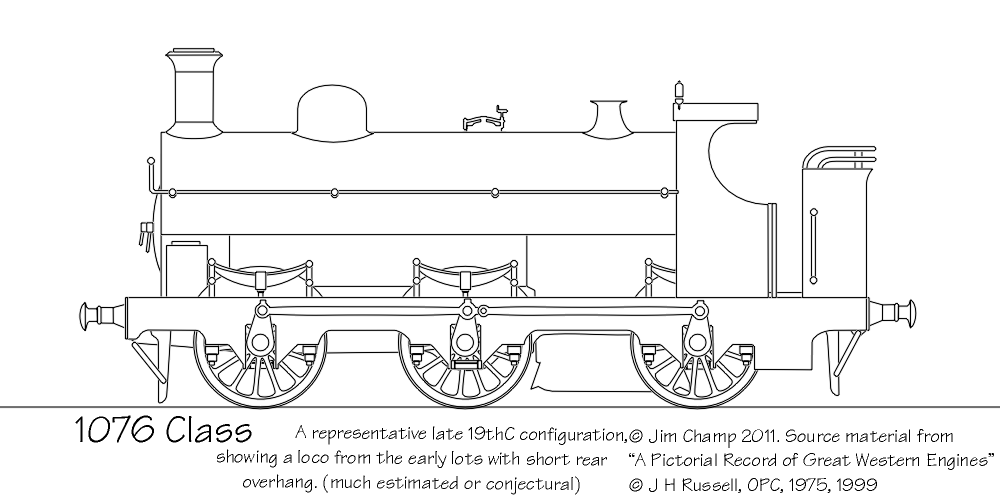
|
(Buffalo) A late 19thC configuration, not based on a specific diagram. |
Armstrong | 0-6-0T |
| 633 | 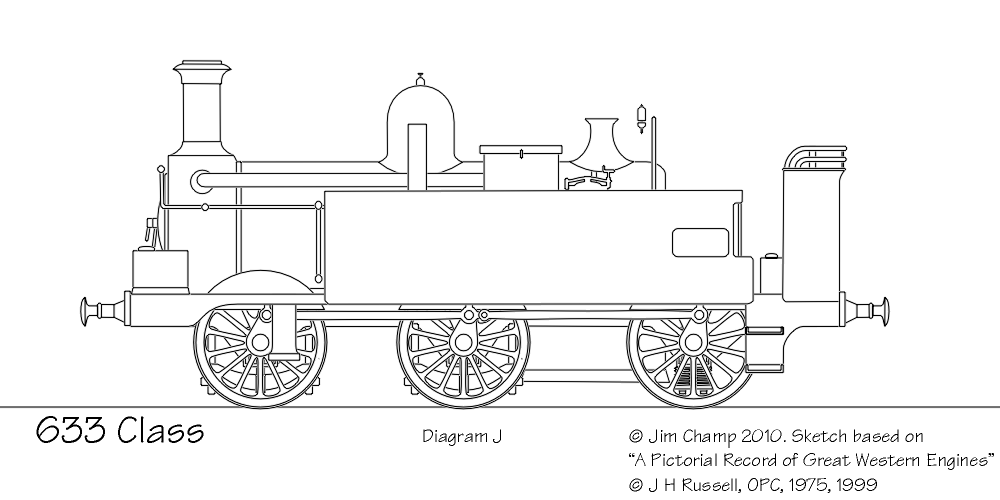
|
Diagram J. Approx 1905. Wolverhampton built. |
Armstrong | 0-6-0T |
| 2721 | 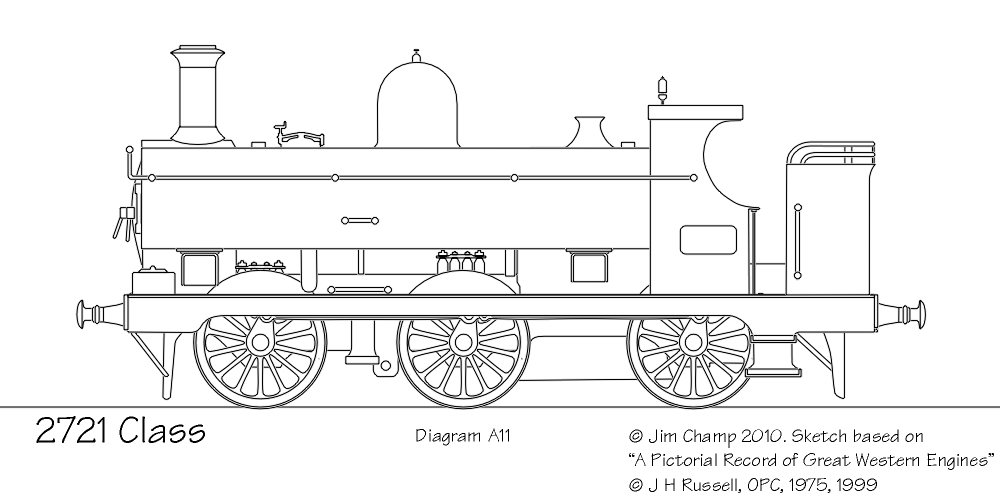
|
Diagram A11. Approx 1909. | Dean | 0-6-0T |
| 1701 | 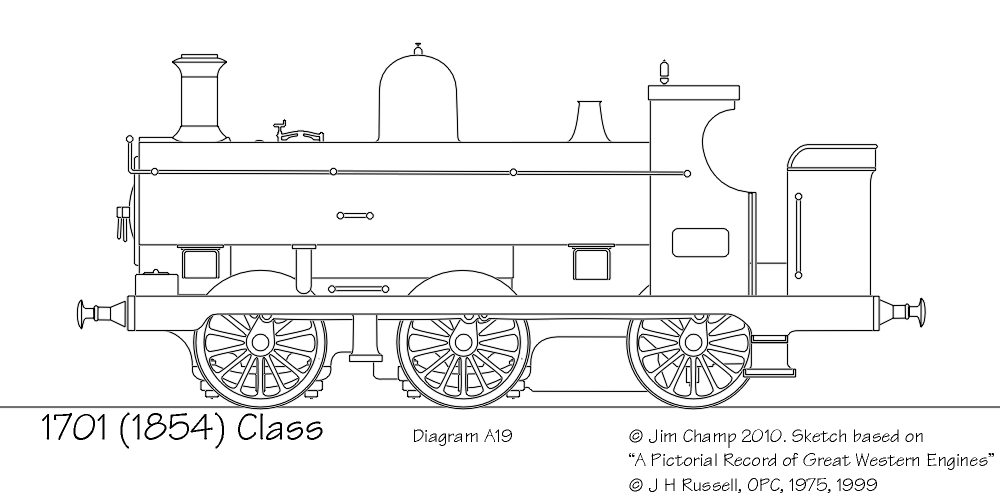
|
(1854 etc) Diagram A19. Approx 1909. | Dean | 0-6-0T |
| 1076 | 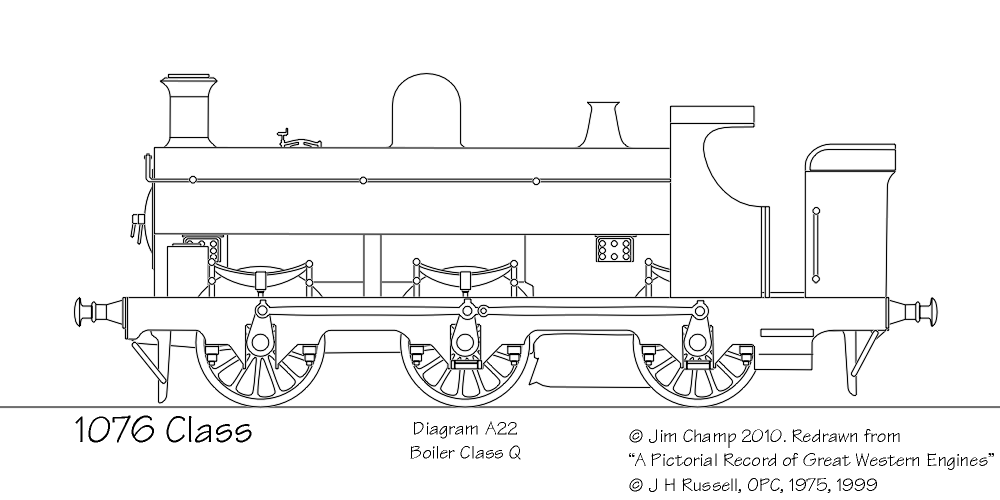
|
(Buffalo) Diagram A22. Approx 1911 | Armstrong | 0-6-0T |
| 1501 | 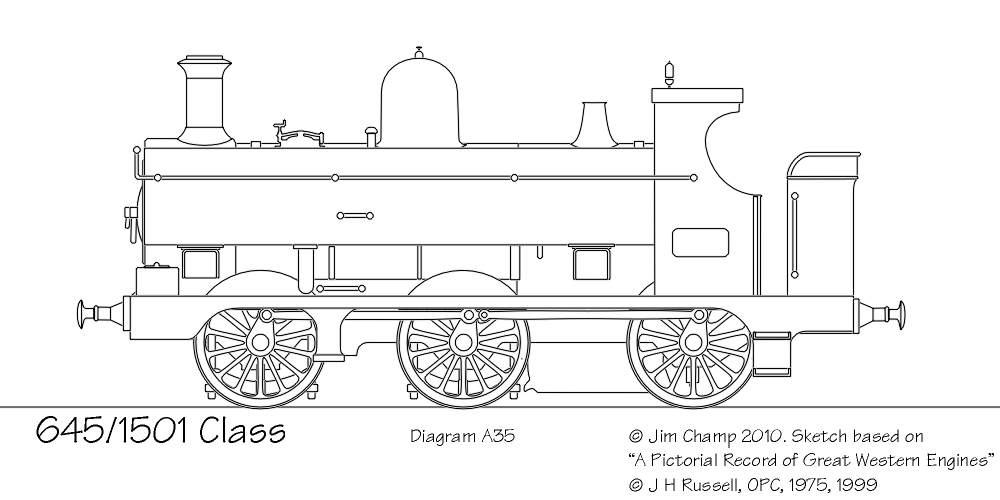
|
(655) Diagram A35 Wolverhampton built. |
Dean | 0-6-0T |
| 1076 | 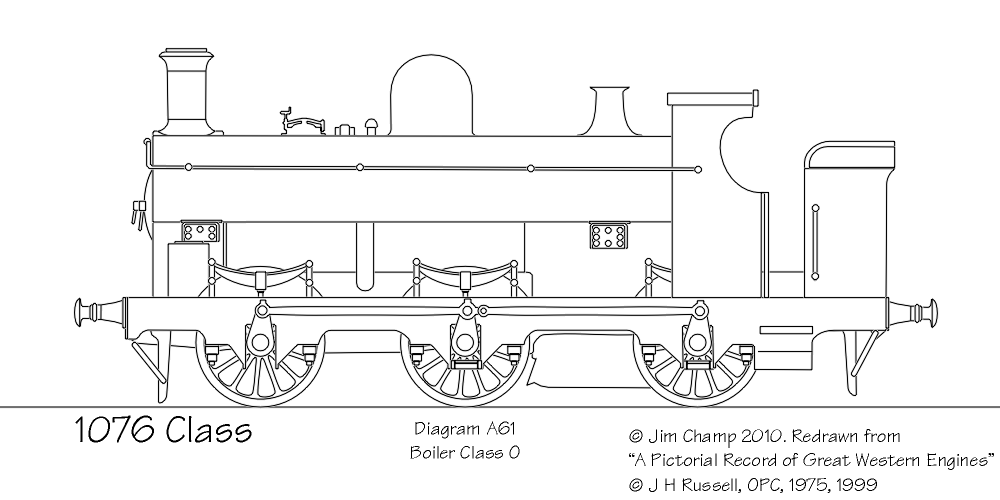
|
(Buffalo) Diagram A61. Approx 1921. | Armstrong | 0-6-0T |
| 1076 | 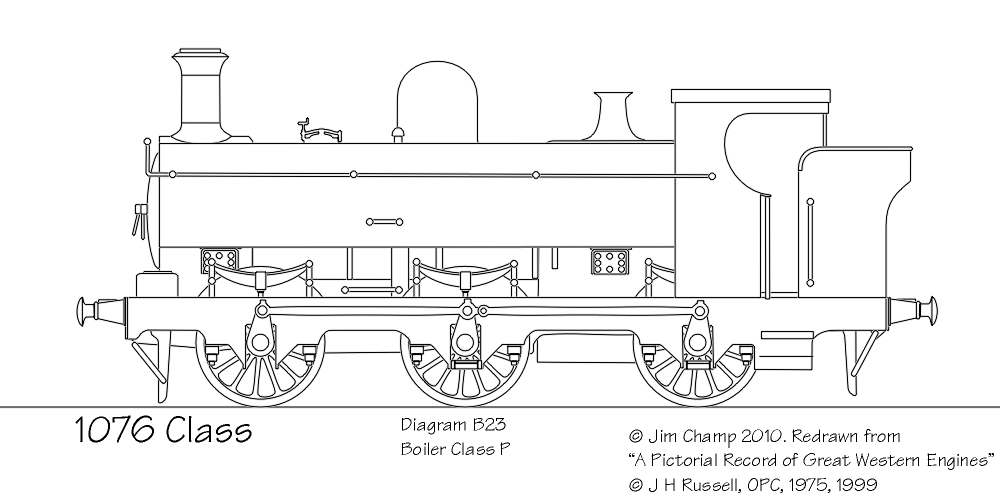
|
(Buffalo) Diagram B23. Approx 1924. | Armstrong | 0-6-0T |
| 2721 | 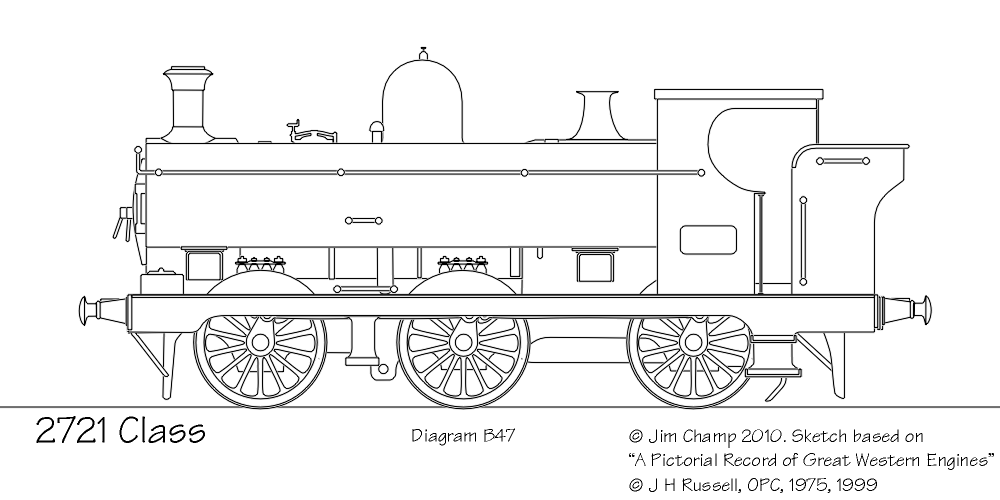
|
Diagram B47. Approx 1924 | Dean | 0-6-0T |
| 850 | 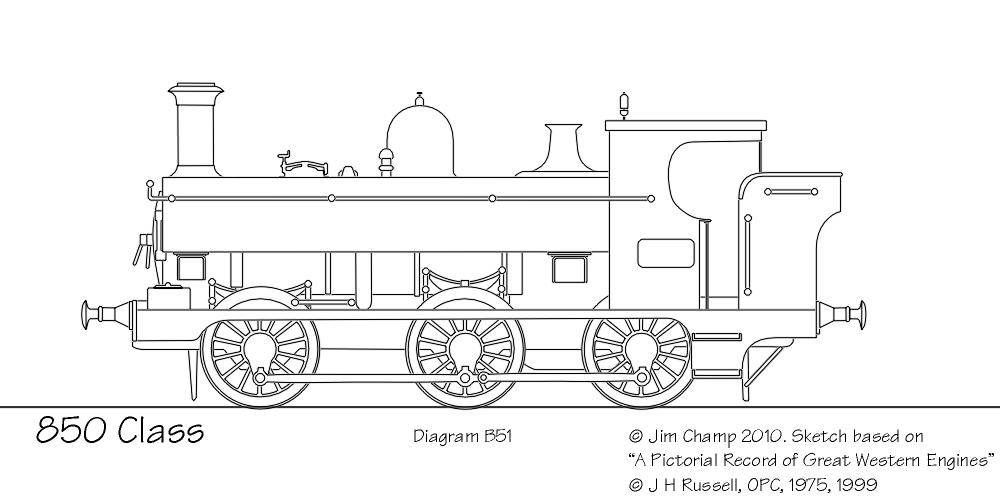
|
Diagram B51. Approx 1924. Wolverhampton built. |
Dean | 0-6-0T |
| 2021 | 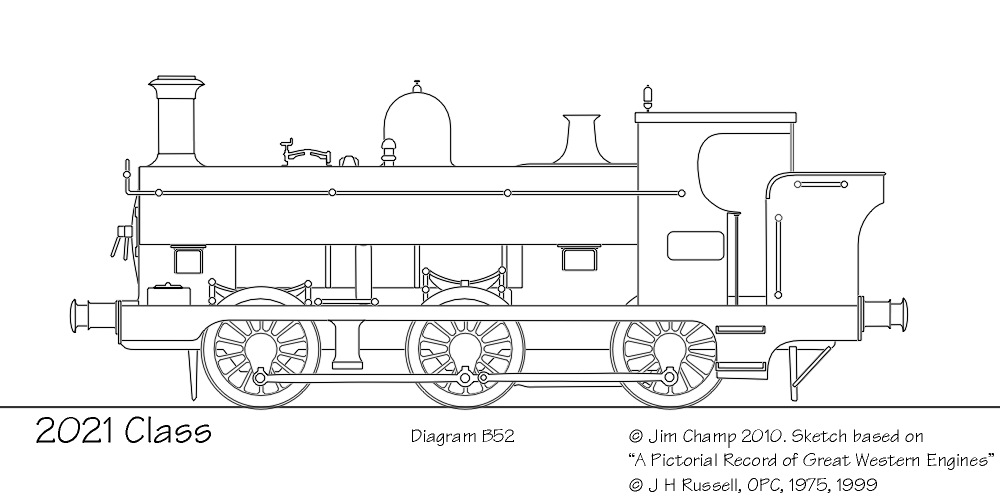
|
Diagram B52. Approx 1924 Wolverhampton built. |
Dean | 0-6-0T |
| 6400 | 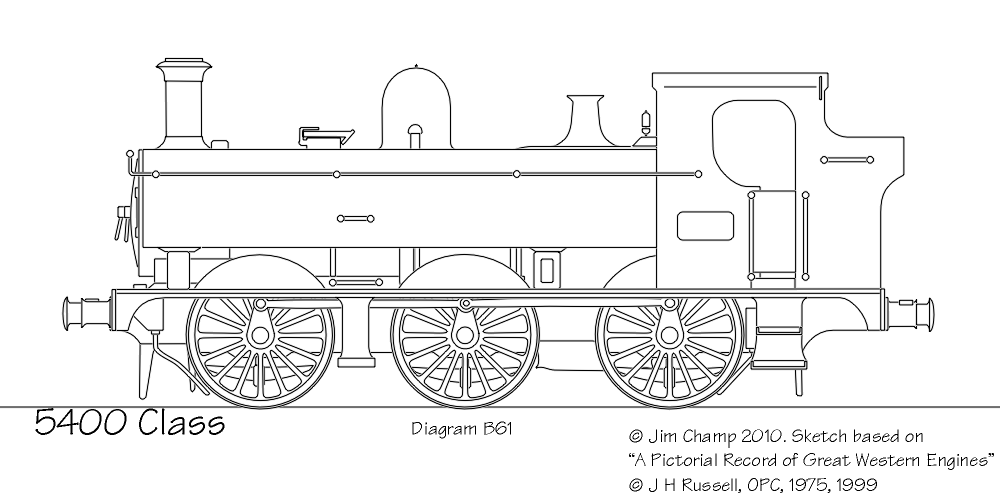
|
Diagram B61. 1931. | Dean - Wolverhampton built. | 0-6-0T |
| 6400 | 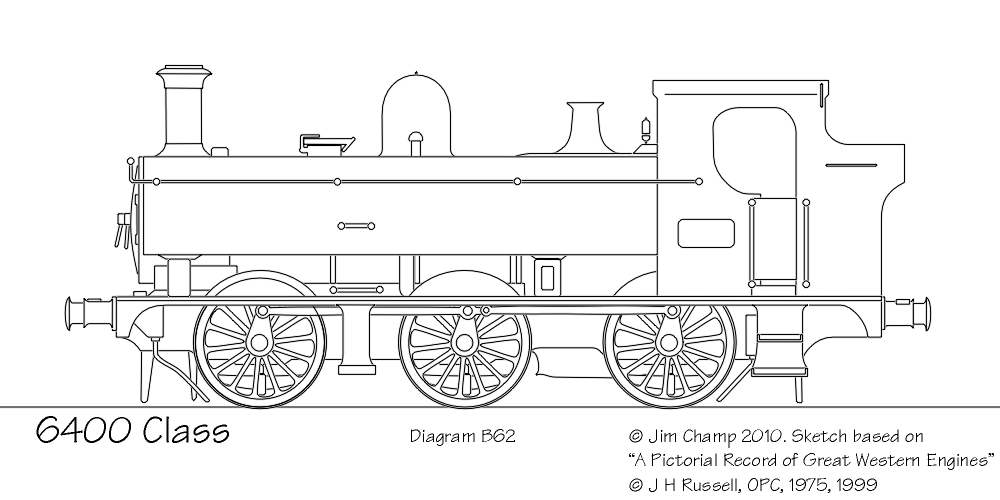
|
Diagram B62. 1932. | Collett. | 0-6-0T |
| 1501 | 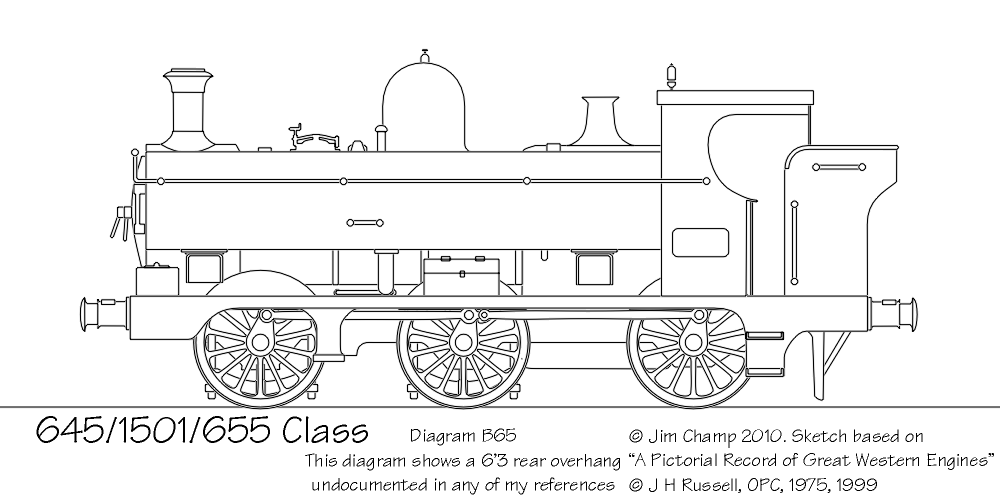
|
(645, 655) Diagram B65. Approx 1933. | Dean - Wolverhampton built. | 0-6-0T |
| 1366 | 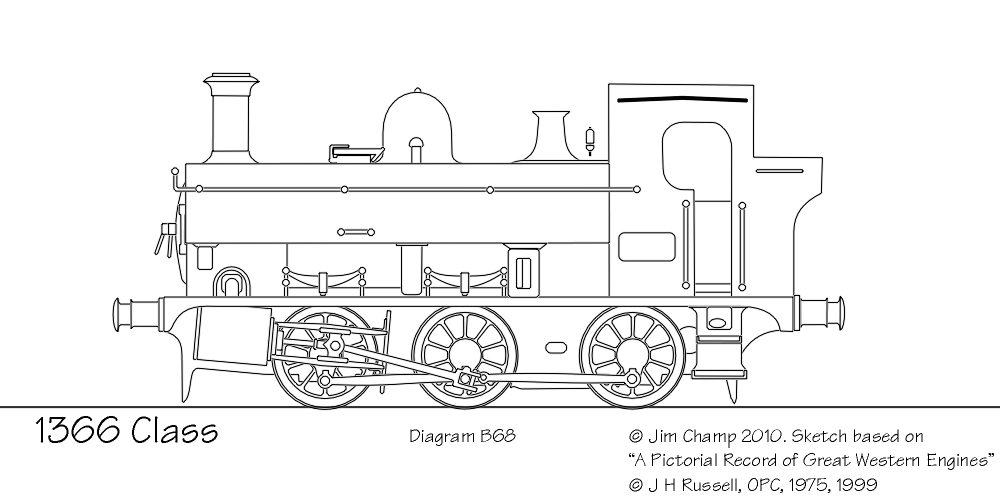
|
Diagram B68. 1934. | Collett | 0-6-0T |
| 8750 | 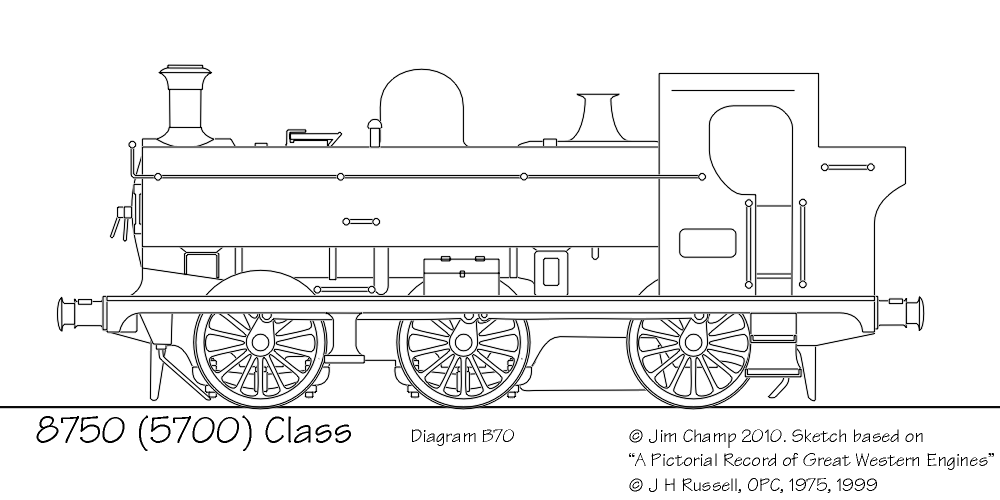
|
(57xx late Cab) Diagram B70. 1933 | Collett | 0-6-0T |
| 6400 | 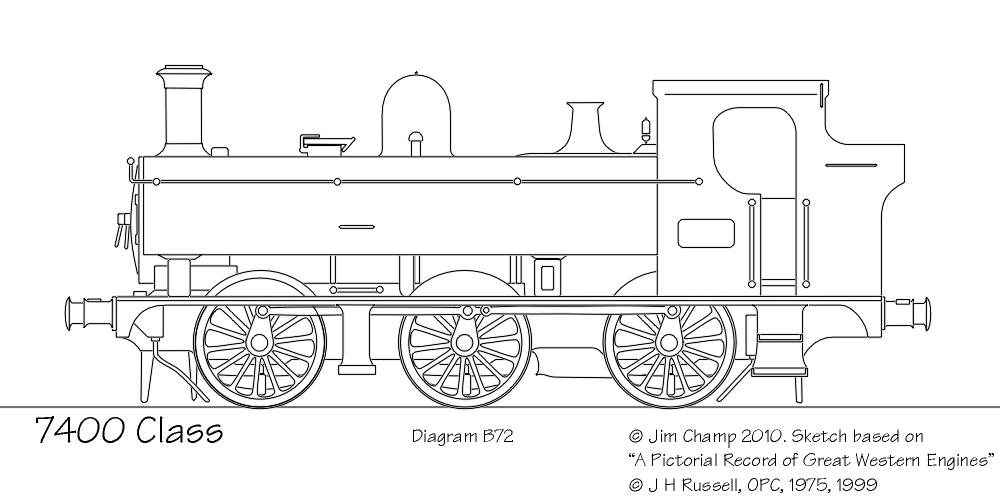
|
Diagram B72. 1936. | Collett. | 0-6-0T |
| 5700 | 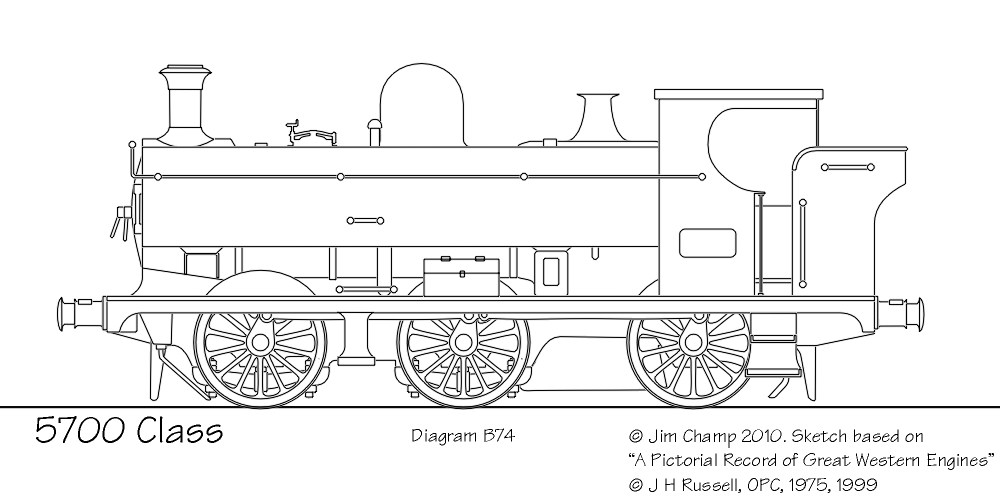
|
Diagram B74. Approx 1934. | Collett | 0-6-0T |
| 9400 | 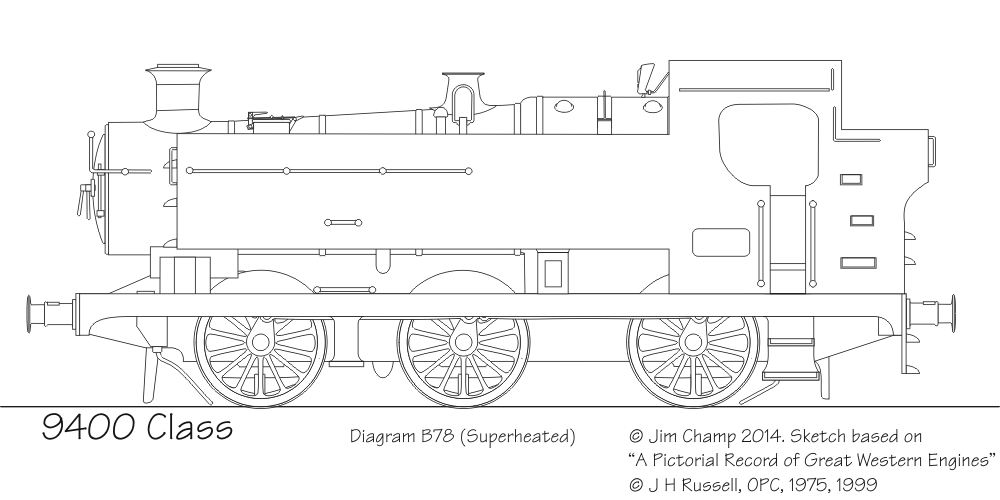
|
(94xx) Diagram B78. 1947. This is the GWR built batch with superheating. |
Hawkesworth | 0-6-0T |
| 1500 | 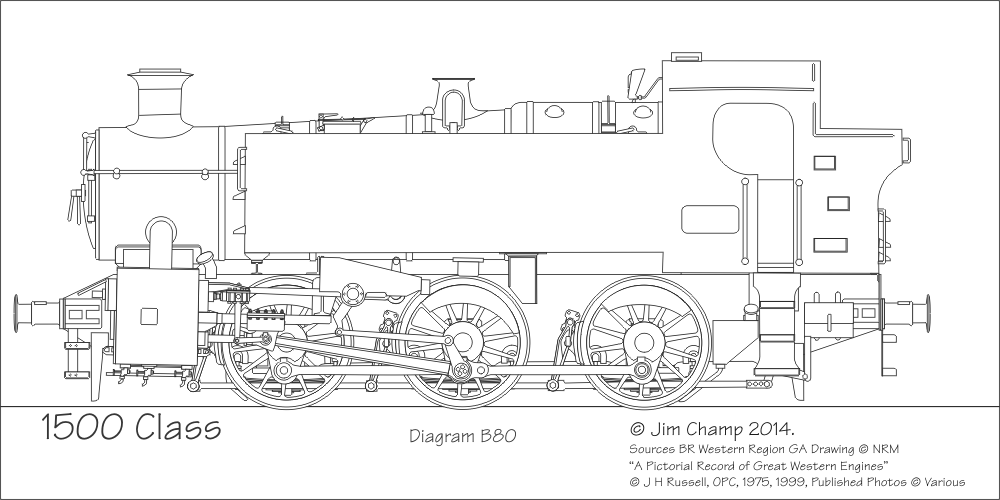
|
(15xx) Diagram B80. 1949 | Hawkesworth | 0-6-0T |
| 1600 | 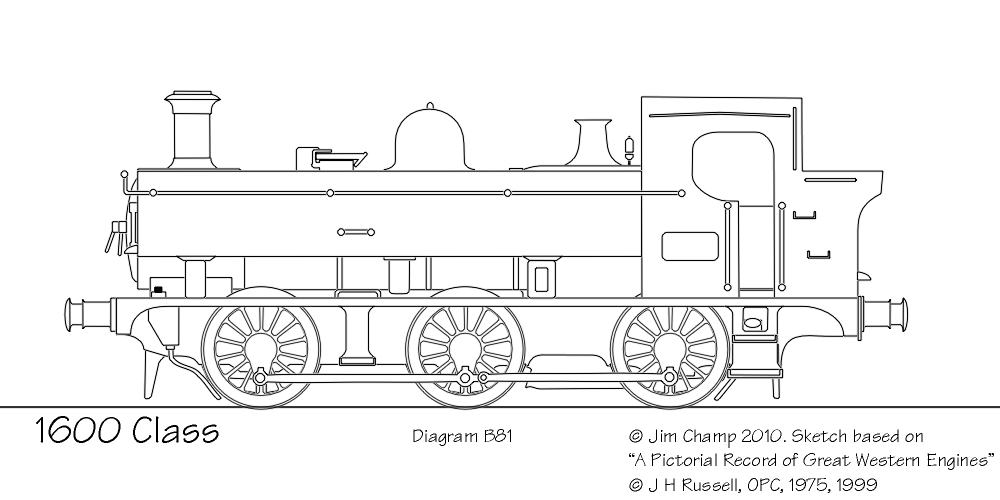
|
(16xx) Diagram B81. 1949 | Hawkesworth | 0-6-0T |
